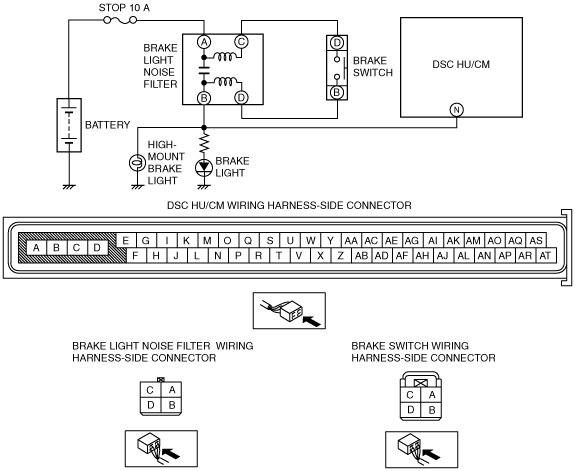DTC
B1484, C1954
Brake switch system
DETECTION CONDITION
• B1484
-
― Open circuit is detected in wiring harness between DSC HU/CM—brake switch (Voltage at the DSC HU/CM terminal N is more than 40% and less than 67% of the voltage at the DSC HU/CM terminal J for 0.5 s continuously.).
• C1954
-
― Brake switch ON signal is input even though signal from brake fluid pressure sensor is lower than specified value (While vehicle is driven at a speed of 10.8 km/h or more, brake switch is continuously ON for 60 s with accelerator pedal ON and brake fluid pressure 500 kPa or lower, not operated).― Brake fluid pressure sensor signal value is continuously more than 1,000 kPa for 1 s with brake switch signal OFF.
FAIL-SAFE
• Inhibits ABS, TCS, and DSC controls, and illuminates ABS warning light, DSC indicator light and brake system warning light (vehicle without the malfunction warning light)* / malfunction warning light (vehicle equipped with the malfunction warning light)*.
(If error is detected during ABS/TCS control, inhibits ABS/TCS control after finishing the control and illuminates ABS warning light.)
POSSIBLE CAUSE
• STOP 10 A fuse malfunction
• Brake switch malfunction
• Brake light noise filter malfunction
• Open circuit or short to ground in the wiring harness between the DSC HU/CM terminal N and the brake switch terminal D
• Brake light malfunction
• High-mount brake light malfunction
• Brake fluid pressure sensor malfunction in DSC HU/CM
